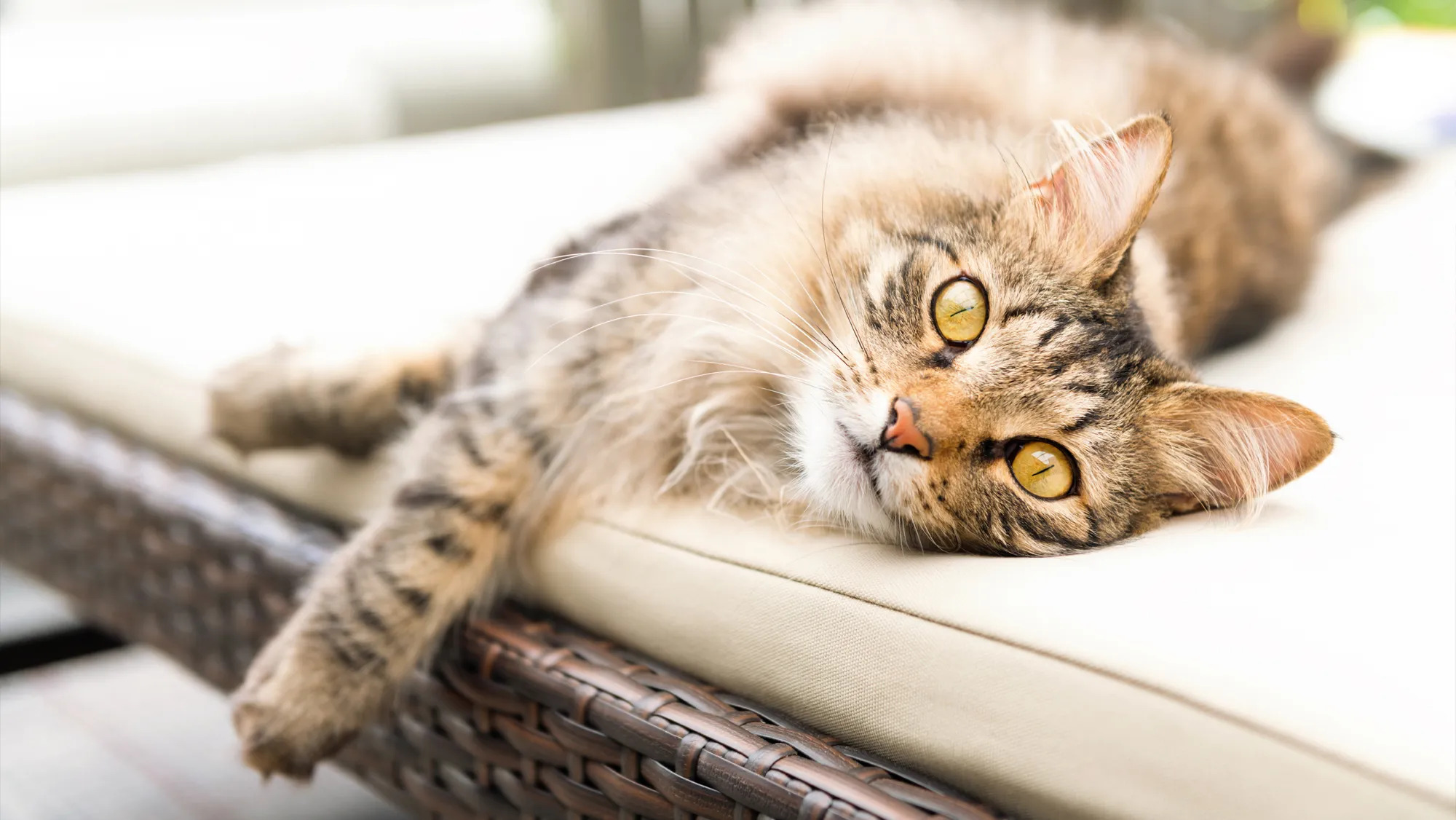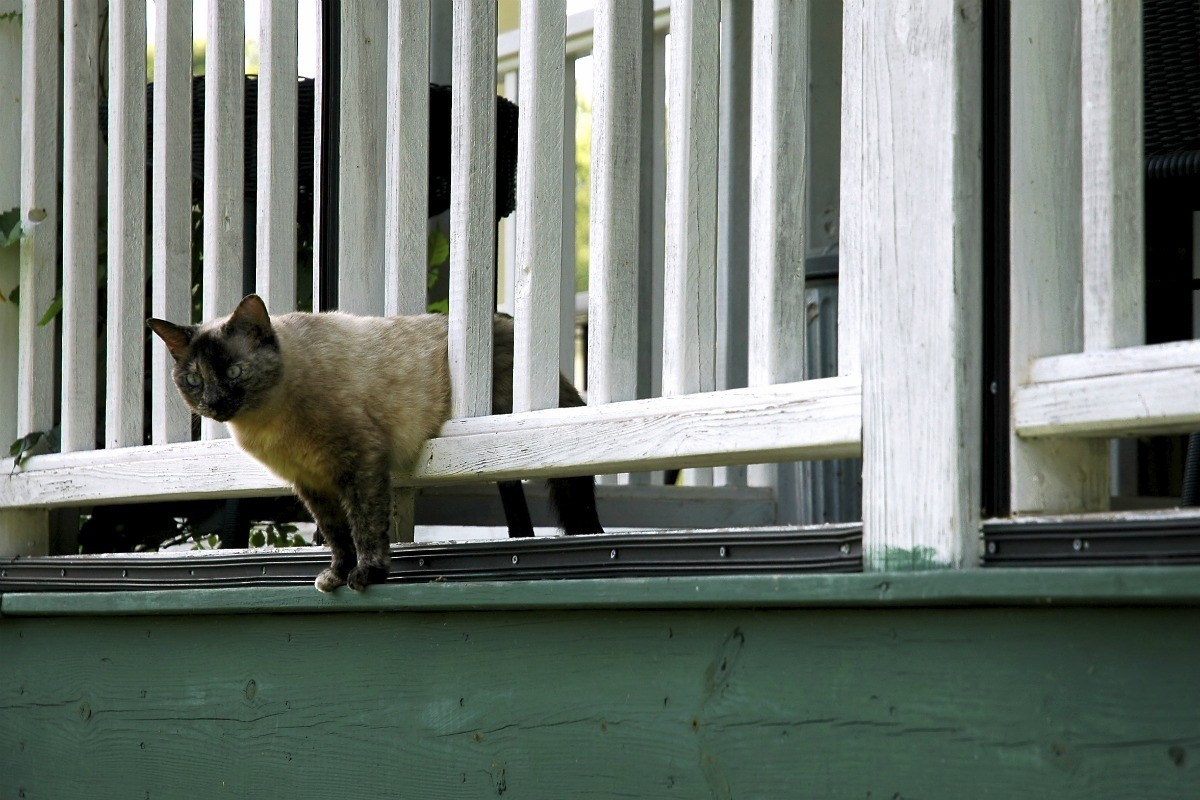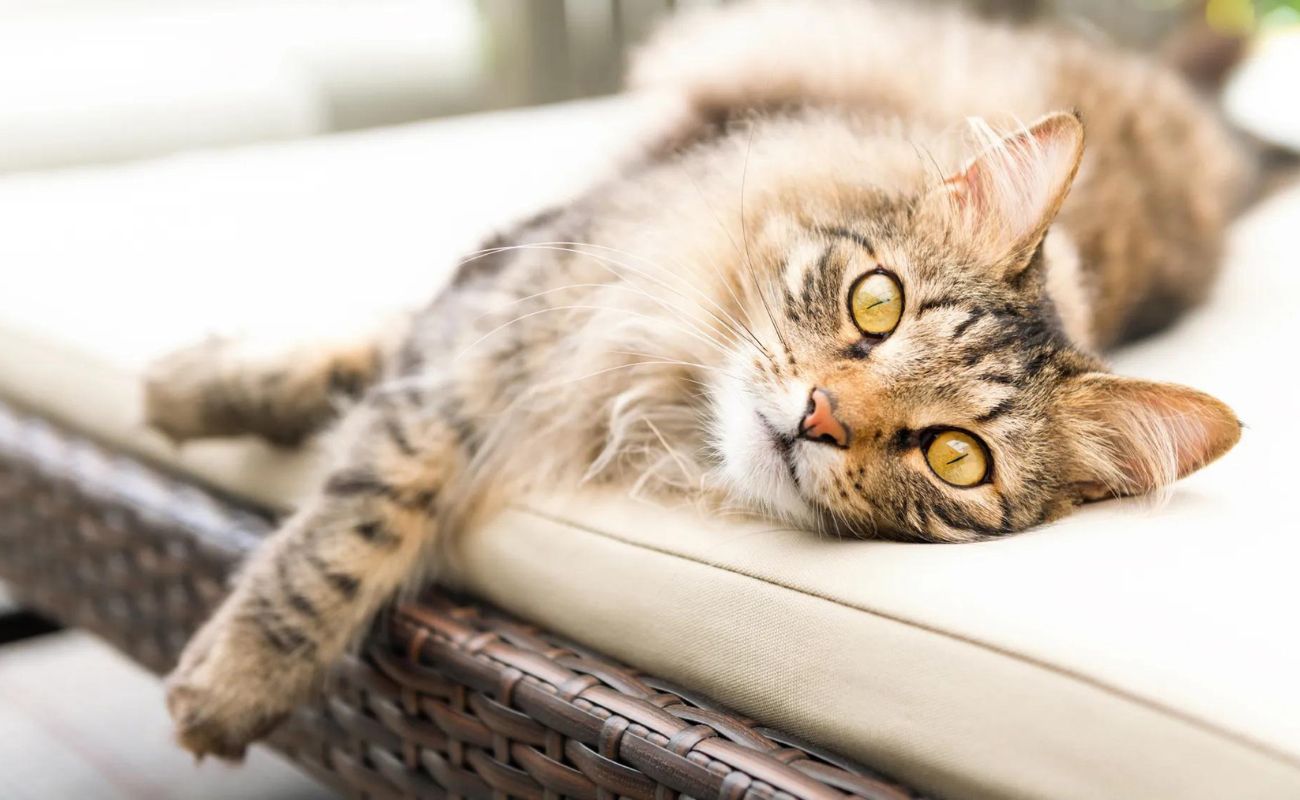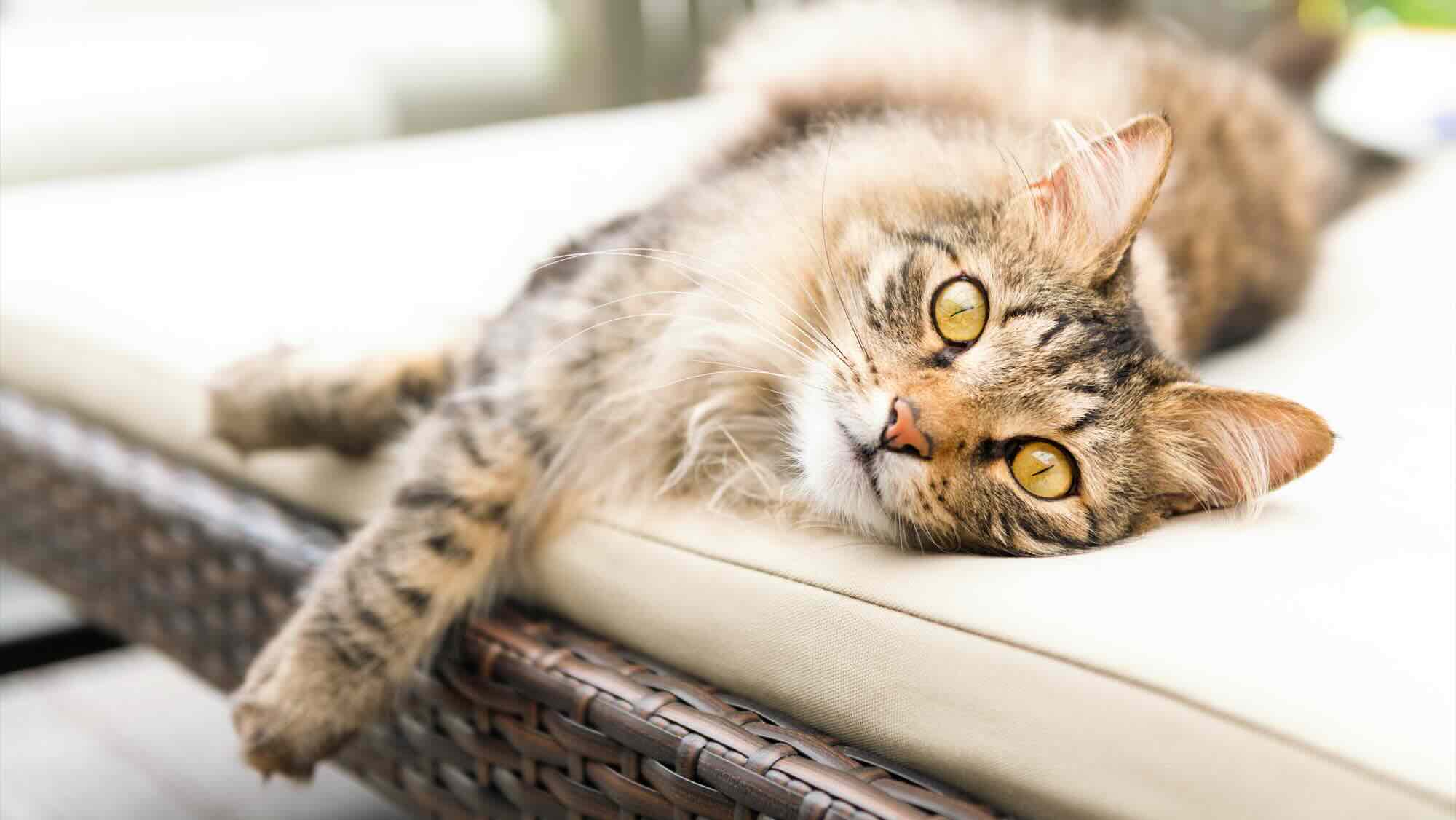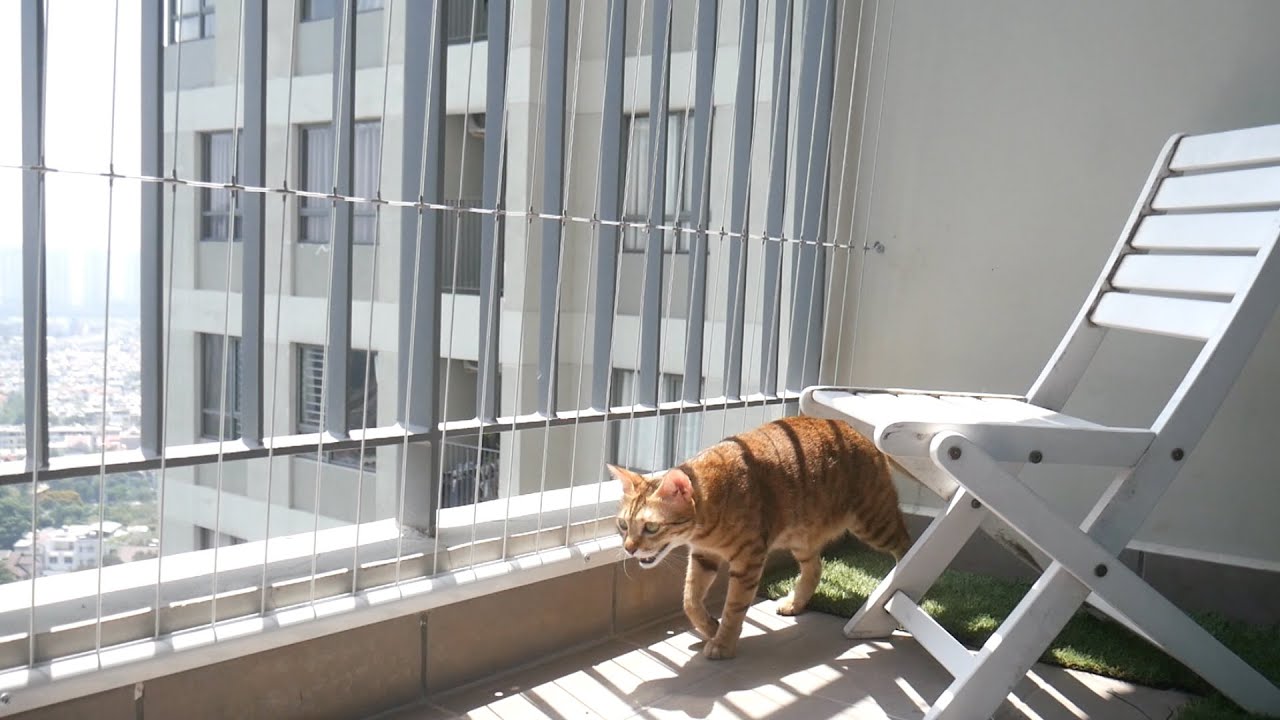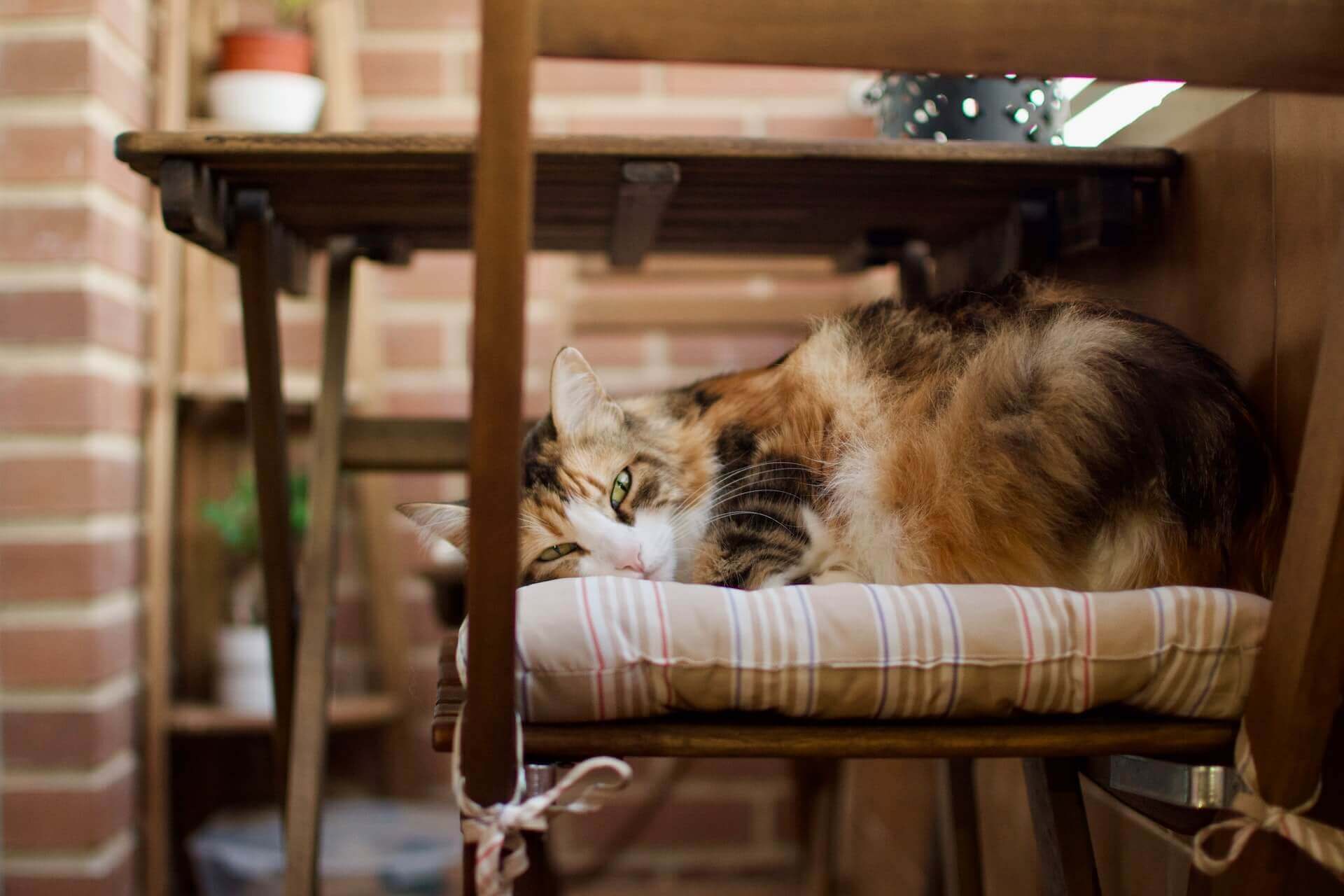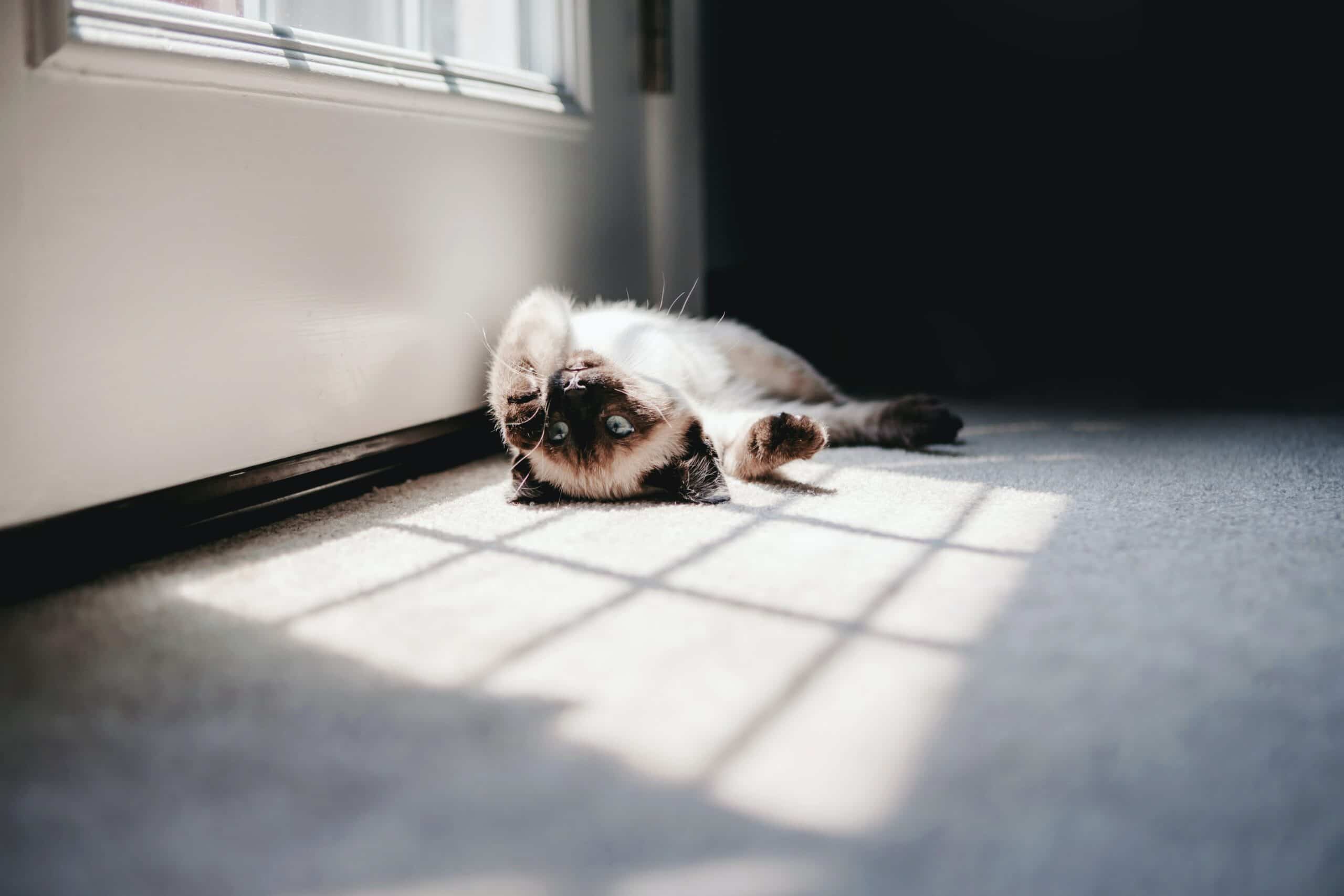Home>Furniture>Bedroom Furniture>How To Keep Cat Off The Bed


Bedroom Furniture
How To Keep Cat Off The Bed
Modified: January 18, 2024
Looking for ways to keep your cat off the bed? Discover effective strategies and tips to prevent your furry friend from accessing your bedroom furniture.
(Many of the links in this article redirect to a specific reviewed product. Your purchase of these products through affiliate links helps to generate commission for Storables.com, at no extra cost. Learn more)
Introduction
There’s nothing quite like sinking into a cozy, comfortable bed at the end of a long day. It’s a sanctuary where we can relax, rejuvenate, and get a good night’s sleep. Unfortunately, our beloved feline friends have a different perspective on our beds. For some reason, cats just can’t seem to resist the allure of a soft and inviting sleeping surface. If you’ve ever found yourself in a constant battle with your cat over the ownership of your bed, you’re not alone.
In this article, we’ll explore why cats love sleeping on beds, the importance of keeping them off, and provide some practical tips to encourage your feline companion to find an alternative sleeping space.
Key Takeaways:
- Create a cozy, cat-friendly sleeping space with warm blankets, vertical perches, and familiar scents to keep your feline friend off your bed and content in their own designated area.
- Use positive reinforcement, consistent training, and patience to establish clear boundaries and redirect your cat’s attention, ensuring a harmonious living environment where both you and your cat can enjoy restful sleep.
Read more: How To Keep Cat Off Furniture
Why cats love sleeping on beds
There are several reasons why cats are drawn to our beds like a magnet. First and foremost, our beds are typically elevated, providing cats with a sense of security and a vantage point from which they can observe their surroundings. Additionally, our beds are warm and cozy, thanks to the soft blankets and pillows that we humans have the luxury of enjoying.
Cats are also attracted to our beds because they carry our scent. As social creatures, cats rely heavily on scent marking as a way to claim territory and establish familiarity. By sleeping on our beds, cats are essentially marking the territory as their own, which can be a source of comfort and security for them.
The importance of keeping cats off the bed
While it may seem harmless to let your cat snuggle up with you on the bed, there are a few reasons why it’s important to establish boundaries and keep them off:
- Hygiene: Cats, no matter how clean they may be, can still carry dirt, bacteria, and parasites on their fur. Allowing them on your bed can increase the risk of transferring these onto your bedding.
- Sleep disruptions: Cats are known to have a different sleep schedule than humans. Their natural instincts may lead them to roam and play during the night, potentially disrupting your restful sleep.
- Allergies: Many people are allergic to cats, and their presence on the bed can exacerbate allergies and respiratory issues.
Now that we understand why it’s important to keep cats off the bed, let’s explore some strategies for creating an alternative sleeping space that will keep both you and your feline friend happy.
Key Takeaways:
- Create a cozy, cat-friendly sleeping space with warm blankets, vertical perches, and familiar scents to keep your feline friend off your bed and content in their own designated area.
- Use positive reinforcement, consistent training, and patience to establish clear boundaries and redirect your cat’s attention, ensuring a harmonious living environment where both you and your cat can enjoy restful sleep.
Read more: How To Keep Cat Off Furniture
Why cats love sleeping on beds
There’s no denying that cats have a special affinity for our beds. While it can be frustrating to find your cat curled up on your pillow or nestled under the covers, it’s important to understand why they love sleeping on beds so much.
One of the main reasons is comfort. Cats are creatures of comfort, and our beds provide them with the perfect combination of softness and warmth. The mattress, pillows, and blankets create a cozy and inviting environment that appeals to their innate desire for comfort.
In addition to comfort, beds also offer elevation. Cats are natural climbers and enjoy being in high places where they feel safe and in control of their surroundings. The raised surface of a bed allows them to observe their territory from a vantage point, keeping a close eye on any potential threats or interesting activities.
Another reason why cats love sleeping on beds is the scent. Cats have a highly developed sense of smell, and our beds carry our unique scent. By sleeping on our beds, cats are essentially claiming their territory and marking it with their own scent as well. This can provide them with a sense of security and familiarity.
Furthermore, our beds often provide a sense of companionship. Cats are social animals, and they form strong bonds with their human companions. Sleeping on the bed allows them to be close to us, providing them with a sense of comfort and reassurance.
Lastly, it’s worth mentioning that cats are creatures of routine. If you’ve allowed your cat to sleep on your bed in the past, they may have developed a habit that is difficult to break. Cats are creatures of habit and tend to seek out familiar and comfortable spots for rest.
Understanding why cats love sleeping on beds is the first step to finding a solution that works for both you and your feline friend. By creating an alternative sleeping space and implementing some effective strategies, you can gently encourage your cat to find a new favorite spot to rest, while still maintaining a harmonious relationship with them.
The importance of keeping cats off the bed
While it may seem harmless to let your cat snuggle up with you on the bed, there are several reasons why it’s important to establish boundaries and keep them off.
Hygiene: Cats, despite their grooming habits, can still carry dirt, bacteria, and parasites on their fur. Allowing them on your bed increases the risk of transferring these pollutants onto your bedding. This can be particularly concerning if you have allergies or respiratory issues.
Sleep disruptions: Cats have unique sleep patterns that differ from humans. They are crepuscular animals, which means they are most active during dawn and dusk. Allowing your cat on the bed may result in sleep disruptions as they engage in nighttime exploration or playfulness. Their movements and meowing could disrupt your restful sleep, leaving you feeling tired and irritable the next day.
Allergies: It’s no secret that many people are allergic to cats. Cat allergens, such as dander and saliva, can easily accumulate on bedding. Allowing your cat on the bed can exacerbate these allergies, leading to symptoms such as sneezing, itching, and respiratory issues.
Boundaries and personal space: Establishing boundaries with your cat by not allowing them on the bed helps reinforce the concept of personal space. It’s essential to have a designated area where you can enjoy uninterrupted sleep and relaxation without your cat encroaching on your personal space.
Preventing territorial behavior: Allowing your cat to sleep on the bed may reinforce territorial behavior. Cats may perceive the bed as their territory and become possessive and defensive of it. This can lead to aggression towards other pets or even visitors who dare to share the same space.
By keeping cats off the bed, you are prioritizing hygiene, promoting better sleep, managing allergies, setting boundaries, and preventing territorial behavior. However, it’s important to find alternatives for your cat to ensure they still have a comfortable and inviting place to rest.
Now that we understand the importance of keeping cats off the bed, let’s explore some strategies and tips to encourage your feline friend to find an alternative sleeping space that they’ll love just as much as your bed.
Read more: How To Keep Cats Off Countertops
Understanding your cat’s behavior
In order to effectively address the issue of keeping your cat off the bed, it’s important to gain a deeper understanding of their behavior. Cats are unique creatures with their own instincts and preferences, and by understanding these behaviors, you can better address their needs and find the right solutions.
Observing cues: Pay close attention to your cat’s body language and behavior. Cats often display subtle cues that indicate their comfort or discomfort. For example, if your cat is kneading, purring, and curling up contentedly, it’s a sign that they feel safe and relaxed. On the other hand, signs of anxiety or stress include tail flicking, hissing, growling, and hiding. Understanding these cues can help you identify if your cat is seeking comfort on your bed or if they are unhappy with their current sleeping situation.
Providing a sense of security: Cats are creatures of comfort and security. By providing them with a safe and secure environment, they are less likely to seek comfort on your bed. This can be achieved by offering hiding spots, vertical spaces, and cozy sleeping areas in other parts of your home, where they can feel secure and relaxed.
Respecting personal space: Cats value their personal space, just like we do. They appreciate having their own designated areas where they can retreat and relax undisturbed. By creating specific spaces for your cat, such as a cozy cat bed, a soft blanket in a quiet corner, or a cat tree, you are giving them an alternative to your bed that meets their need for personal space.
Understanding the influence of scent: Cats rely heavily on scent to navigate their world and communicate with others. The scent is particularly important for marking territory. Consider providing your cat with objects or bedding that carry their own scent, such as a blanket or a scratching post. By offering items that have their own distinct smell, you can help redirect their scent-marking behavior away from your bed.
Enrichment and stimulation: Cats are naturally curious and playful creatures. By providing them with plenty of mental and physical stimulation, you can help prevent boredom and the need to seek comfort on your bed. Interactive toys, scratching posts, and puzzle feeders are great ways to engage your cat and keep them entertained, reducing their desire to sleep on your bed out of boredom.
Understanding your cat’s behavior and addressing their needs can go a long way in redirecting their attention away from your bed. By creating a cat-friendly environment and providing them with alternative comfortable and engaging spaces, you’ll decrease the likelihood of your cat seeking out your bed as their preferred sleeping spot.
Place double-sided tape or aluminum foil on the bed to deter your cat from jumping on it. Cats dislike the texture and will likely avoid the area.
Creating a comfortable alternative sleeping space
One of the key strategies for keeping your cat off the bed is to provide them with a comfortable and inviting alternative sleeping space. By understanding your cat’s preferences and creating an environment that meets their needs, you can encourage them to choose their own cozy spot to rest. Here are some tips for creating a comfortable alternative sleeping space for your feline companion:
Cat bed or cozy blanket: Invest in a quality cat bed or provide a soft blanket in a quiet corner of your home. Cats love to have their own designated spot where they can curl up and feel safe. Ensure the bed or blanket is placed away from any noisy or high-traffic areas, allowing your cat to have a peaceful and uninterrupted sleep.
Consider the location: Cats appreciate privacy, so choose a location for their alternative sleeping space that offers a sense of seclusion. A secluded corner of a room or a quiet nook can be ideal. Cats also enjoy being able to observe their surroundings, so ensure there is a vantage point or a window nearby that allows them to keep an eye on things.
Provide warmth: Cats are naturally drawn to warm places. Make sure their sleeping area is cozy and warm by providing a comfortable bed with a soft and warm blanket or opting for a heated cat bed. The warmth can mimic the feeling of being nestled on your bed, making it more enticing for your cat.
Create vertical space: Cats love to perch on elevated surfaces, so consider installing a cat tree or shelves where your cat can climb and relax. Vertical space not only provides a comfortable resting spot, but it also allows your cat to feel secure and observe their surroundings from a higher vantage point.
Add familiar scents: To make the alternative sleeping space more appealing to your cat, add some familiar scents. Place a piece of clothing that carries your scent or a blanket that they love in their designated sleeping area. The familiar scent will provide a sense of comfort and familiarity, encouraging your cat to choose that spot over the bed.
Keep it clean: Regularly clean and maintain your cat’s sleeping area. Cats are known for their cleanliness, and a dirty or unpleasant-smelling sleeping spot may deter them from using it. Make sure to wash the bedding regularly and keep the area free from any litter or debris.
By creating a comfortable alternative sleeping space that meets your cat’s needs, you are providing them with an enticing option that keeps them off your bed. Be patient and give your cat time to adjust to the new space. With consistency and positive reinforcement, your feline friend will gradually understand that their designated sleeping area is just as cozy and inviting as your bed.
Providing entertainment and enrichment
Keeping your cat entertained and mentally stimulated is a crucial aspect of keeping them off the bed. Cats are naturally curious and need outlets for their energy and instincts. By providing them with plenty of entertainment and enrichment, you can help divert their attention away from your bed. Here are some ideas to keep your cat engaged and content:
Interactive toys: Invest in interactive toys that encourage play and engagement. Toys that mimic prey, such as wand toys or puzzle toys with hidden treats, can keep your cat mentally and physically stimulated. Rotate the toys regularly to keep them fresh and exciting for your cat.
Scratching posts: Cats have a natural instinct to scratch, which helps them stretch and keep their claws healthy. Provide sturdy and appealing scratching posts in different areas of your home. This will not only keep your cat entertained but also save your furniture from becoming their scratching target.
Window perches: Cats love to observe the world outside, so consider installing window perches that allow your cat to soak up the sunlight and watch birds or other outdoor activities. This provides visual stimulation and a sense of entertainment for your cat.
Hiding spots: Create hiding spots in your home where your cat can retreat and feel secure. This can be as simple as leaving a cardboard box or creating cozy hideaways with blankets or pet tents. These hiding spots offer a sense of security and give your cat a place to relax and unwind.
Playtime and interactive sessions: Set aside dedicated playtime with your cat each day. Engage in interactive sessions using toys like feather wands or laser pointers to simulate hunting behavior. Not only will this tire them out physically, but it will also provide mental stimulation and satisfy their natural instincts.
Rotate and introduce new toys: Keep your cat’s toy selection exciting by rotating them regularly and introducing new toys occasionally. Cats can quickly lose interest if they have the same toys available all the time. By keeping the toy selection varied and introducing new ones, you can keep their interest piqued.
Indoor climbing and exploring: Provide vertical spaces for your cat to climb and explore indoors. Cat trees, shelves, or wall-mounted climbing structures can give them opportunities to climb, jump, and play. This helps fulfill their natural climbing instincts and keeps them entertained within their own designated spaces.
By providing entertainment and enrichment for your cat, you are keeping them mentally and physically engaged. Engrossing activities and engaging toys will help divert their attention from your bed, making it less tempting for them to seek comfort there. Remember to spend quality time with your cat, as your presence and interaction are invaluable sources of stimulation and entertainment for them.
Using deterrents to keep cats off the bed
If your cat has a persistent habit of jumping onto your bed despite your efforts, using deterrents can be an effective strategy to discourage them. By using these deterrents, you can create an unpleasant association with the bed, making it less appealing for your cat. Here are some deterrent methods to consider:
Double-sided tape or aluminum foil: Cats typically don’t like the sticky feeling of double-sided tape or the crinkling sound of aluminum foil. Place these materials on the areas of the bed where your cat typically jumps up. This can deter them from accessing the bed by creating an uncomfortable sensation.
Scat mats or motion-activated deterrents: Scat mats are devices that emit a mild static pulse when your cat touches them. Place a scat mat on the bed to create a negative experience if your cat attempts to jump on it. Similarly, motion-activated deterrents with a loud noise or burst of air can startle your cat, teaching them to avoid the bed.
Essential oils or scents cats dislike: Cats have a strong sense of smell. Spraying essential oils or scents that cats dislike, such as citrus or lavender, around the bed can act as a deterrent. Cats typically avoid areas with these smells and will be less likely to approach the bed.
Texture aversion: Experiment with textures that cats find unpleasant to walk on, such as plastic carpet runners with the prickly side facing up. Place these near the bed or around the bed frame to discourage your cat from approaching the area.
Water spray bottle: If you catch your cat in the act of jumping on the bed, a gentle spray of water can be an effective deterrent. This is a harmless and unpleasant experience for the cat and can discourage them from repeating the behavior.
Positive reinforcement: While deterrents can be effective, it’s essential to provide your cat with positive reinforcement when they choose their designated sleeping spot. Praise and reward your cat when they use their alternative sleeping space, reinforcing the behavior you want to encourage.
Remember that deterrents should be used in conjunction with creating a comfortable and appealing alternative sleeping space for your cat. It’s important to provide them with an attractive option that meets their needs. By combining deterrents with positive reinforcement, you can effectively train your cat to stay off the bed and redirect their attention to their own cozy spot.
Read more: How To Keep Dogs Off The Bed
Training your cat to stay off the bed
If you want to establish a clear boundary for your cat and teach them to stay off the bed, consistent training is key. With patience and positive reinforcement, you can successfully train your cat to respect your sleeping space. Here are some tips to help you in training your cat to stay off the bed:
Provide an alternative: Make sure you have provided a comfortable and appealing alternative sleeping space for your cat. This can be a cozy cat bed, a designated blanket, or a cat tree. Place this alternative sleeping spot in a desirable location that offers warmth, privacy, and a good view of the surroundings.
Use positive reinforcement: Whenever you see your cat using their designated sleeping spot instead of the bed, offer praise, treats, or affection. Positive reinforcement will help them associate the alternative space with rewards and make it more enticing for them to choose that spot over the bed.
Redirect their attention: If you notice your cat heading towards the bed, distract them with toys or engage them in playtime. This redirection of focus helps divert their attention away from the bed and reinforces the idea that there are more interesting and engaging activities to be enjoyed elsewhere.
Consistency and persistence: Be consistent in your training efforts and enforce the rule of staying off the bed every time. If you allow your cat on the bed occasionally, it can create confusion and make the training process more challenging. Persistence is key to establishing the behavior you desire.
Establish clear boundaries: Use verbal cues, such as saying “Off” or “No,” when your cat attempts to jump on the bed. Accompany the verbal cue with a gentle but firm physical cue, such as lifting them off the bed or gently nudging them away. This helps them understand that the bed is not an acceptable place for them to be.
Make the bed less appealing: Cats are creatures of comfort, and they are drawn to beds because they are soft and cozy. Minimize their interest by making the bed less comfortable. Use a fitted sheet rather than loose blankets, and remove any inviting pillows or plush bedding that may entice your cat.
Be patient and avoid punishment: Training takes time, so be patient with your cat as they adjust to the new rules. Avoid punishment or negative reinforcement, as it can create fear and insecurity. Positive reinforcement and redirection are more effective in encouraging the desired behavior.
By consistently and patiently training your cat to stay off the bed, you can establish clear boundaries and reinforce the idea that their designated sleeping space is the preferred option. With time and positive reinforcement, your cat will learn to respect your sleeping space and enjoy their own comfortable spot.
Consistency and patience in keeping cats off the bed
When it comes to keeping cats off the bed, consistency and patience are paramount. Cats are creatures of habit, and changing their behavior requires time and dedication. Here are some important considerations for maintaining consistency and practicing patience in your efforts:
Establish clear rules: Set clear boundaries from the beginning and be consistent in enforcing them. Make it a firm rule that the bed is off-limits for your cat, and stick to it in all circumstances. Avoid sending mixed signals by allowing your cat on the bed occasionally, as this can confuse them and make it harder for them to understand the rules.
Use positive reinforcement: Reward your cat whenever they choose to use their designated sleeping spot instead of the bed. Offer praise, treats, and affection to reinforce the desired behavior. Positive reinforcement creates a positive association and motivates your cat to continue using their alternative sleeping space.
Redirect and distract: If you see your cat attempting to jump on the bed, gently redirect their attention to a more appropriate activity or location. Use toys or engage them in playtime to provide a positive distraction. This helps reinforce the idea that there are more exciting and enjoyable things to do elsewhere.
Consistently provide an appealing alternative: Ensure that your cat’s alternative sleeping space is comfortable, inviting, and meets their needs. Make it more desirable than the bed by offering warm blankets, cozy beds, or elevated perches. By consistently providing an attractive alternative, you increase the chance of your cat choosing that space over the bed.
Be patient and understanding: Remember that changing your cat’s behavior takes time. Cats are independent animals with their own unique personalities and learning pace. Be patient and understanding as your cat adjusts to the new rules. Avoid getting frustrated or resorting to punishment, as this can hinder progress and potentially damage your relationship with your furry friend.
Consistency in all household members: Ensure that everyone in the household is on the same page and follows the same rules regarding keeping the cat off the bed. Consistency among family members is crucial to reinforce the message and prevent confusion for your cat.
Monitor and reinforce: Regularly monitor your cat’s behavior and reinforce the training when needed. If you notice any regressions or your cat attempting to access the bed, gently redirect them back to their designated sleeping area while offering positive reinforcement. Consistency in reinforcement helps solidify the desired behavior.
Adjust expectations: Understand that complete success may take time. Some cats may take longer to adjust to the new rules, while others may be quick learners. Each cat is unique, so adjust your expectations accordingly and celebrate even small victories along the way.
By maintaining consistency and practicing patience throughout the process, you can effectively keep your cat off the bed. It may require some time and effort, but with dedication and positive reinforcement, you’ll create a harmonious living environment where both you and your feline companion can enjoy a good night’s sleep in your respective spaces.
Conclusion
Keeping cats off the bed can be a challenge, but with the right strategies and a patient approach, it is definitely achievable. Understanding why cats love sleeping on beds and the importance of keeping them off is the first step in finding a solution that works for both you and your feline friend.
Creating a comfortable alternative sleeping space is crucial to redirect your cat’s attention away from your bed. Providing a cozy bed, warm blankets, vertical spaces, and hiding spots can help create an inviting and secure area for your cat to rest.
Additionally, providing entertainment and enrichment is essential to keep your cat mentally stimulated and engaged. Interactive toys, scratching posts, and play sessions will prevent boredom and reduce the likelihood of your cat seeking comfort on your bed out of sheer lack of entertainment.
Using deterrents can be an effective way to discourage your cat from accessing the bed. Double-sided tape, motion-activated deterrents, and scents that cats dislike can create negative associations with the bed, making it less appealing for them.
Training your cat to stay off the bed requires consistency and patience. Establishing clear rules, providing positive reinforcement, redirecting their attention, and showing understanding are key elements in the training process. Remember to be patient and adjust expectations, as each cat learns at their own pace.
In conclusion, by understanding your cat’s behavior and providing them with alternatives, along with consistent training and patience, you can successfully keep your cat off the bed. It may take time and effort, but the result is a harmonious living space where you can enjoy your bed while your cat happily rests in their own designated sleeping area.
Frequently Asked Questions about How To Keep Cat Off The Bed
Was this page helpful?
At Storables.com, we guarantee accurate and reliable information. Our content, validated by Expert Board Contributors, is crafted following stringent Editorial Policies. We're committed to providing you with well-researched, expert-backed insights for all your informational needs.
